Horror movie anthologies are tricky. It may seem odd that a genre where people’s spines are ripped out and children spew green bile across the room could have subtle nuances, but it’s true. Great horror movies break from the exploitation flicks like Hostel by having a plot, so that you care about why some insane killer is running around with a machete and a hockey mask while he disembowels teenagers. Don’t get me wrong, I love a good disemboweling as much as the next horror freak, but it’s even better when I care who or why.
With horror anthologies, a movie needs not only decent plots for each of the short films within it, but a continuity plot-line to connect all those stories together. At least, the good ones work that way. The great ones do it in a way that hasn’t been seen before.
In order to show just how far horror anthology films have come up to now, we have compiled some of the best horror anthologies that use, in one way or another, the idea of a continuity plot to make multiple good horror movies into one great horror movie.
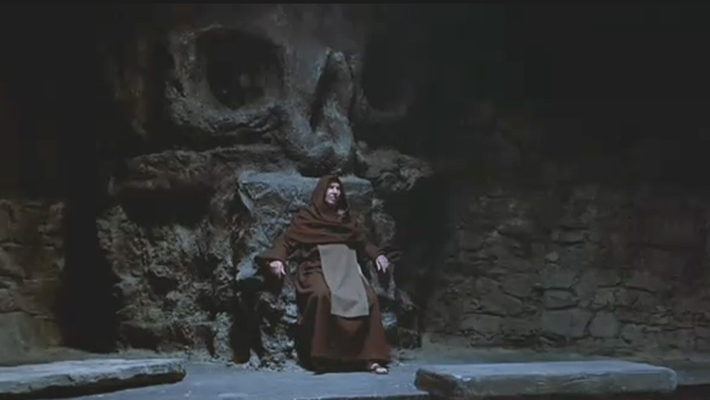
Tales from the Crypt (1972)
After EC Comics launched their horror series revolving around a pun-spitting undead Crypt Keeper, but before John Kassir was doing voice work for the pun-spitting undead Crypt Keeper on HBO, there was a little known British thriller titled Tales from the Crypt that featured Ralph Richardson as a serious, doom-bringing Crypt Keeper that barely smiled, much less cracked a horrible joke and burst into a frenzy of cackling that would make the Wicked Witch of the West blush.
The continuity plot followed five people who randomly decide to go on a tour of a plot of crypts, which would sound weird if I wasn’t walking around crypts by myself when I visited Ireland at age 10. At least these people had a tour guide–albeit a hooded figure who tells each of them how they will meet their demise. Those discussions are the short films of the movie.
While the stories were pretty awesome for the early ’70s (even if the show by the same name retold a couple of them a bit better,) the continuity plot really is the pinnacle of horror anthologies. As short as the changeovers are, the suspense and fear make you just as anxious to hear the next tale from the Crypt Keeper as the actor that the Crypt Keeper is addressing, who has far more to lose.

Asylum (1972)
It seems that Amicus Productions was the Lionsgate of 1972. Either that, or they just found a good theme for horror movies and hung on for dear life. Asylum, aka House of the Crazies, was another horror anthology movie but, unlike its predecessor, dealt with the living rather than the dead. It also featured Britt Ekland, who is arguably a top 5 Bond girl, and Charlotte Rampling, who was inarguably damn sexy fighting an orca in a wetsuit.
The continuity plot revolves around a young doctor applying for a position at an asylum for the mentally disturbed. He is given the challenge of finding out which of four inmates used to be the director of the asylum by listening to their stories. What’s great about this set-up is that the continuity plot is not just a way to bridge a couple of scary short films together. It is a well-developed plot-line that could have stood on its own if Amicus wanted to just make a short film on a doctor roaming the halls of an asylum.
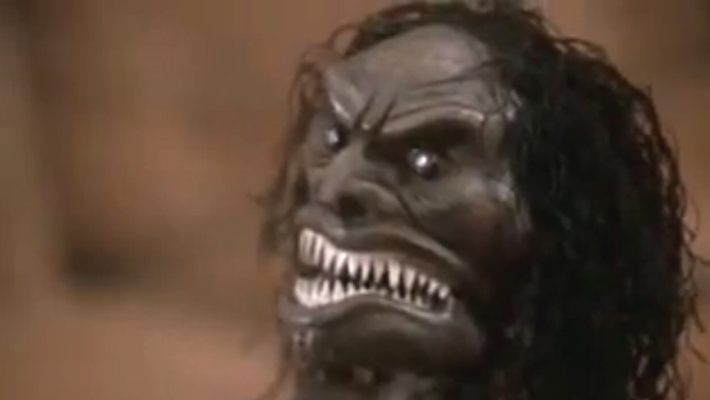
Trilogy of Terror (1975)
Surprisingly to some, that weird movie with a killer Zuni doll wasn’t actually called “Attack of the Killer Zuni Doll.” It was a made-for-TV movie called Trilogy of Terror, an attempt at a horror TV pilot that didn’t go much further than that damn Zuni doll.
The continuity plot is one of the more lazy ways to connect a story, but at the same time is brilliant. There is no continuity plot. Instead, lead actress Karen Black stars three times as the lead actress of all three stories. Using such advanced makeup techniques such as wigs, glasses, and a change of underwear, Karen Black played the part of a sexy English teacher, twins, and the object of affection for that killer Zuni doll (the only thing that anyone really remembers.)
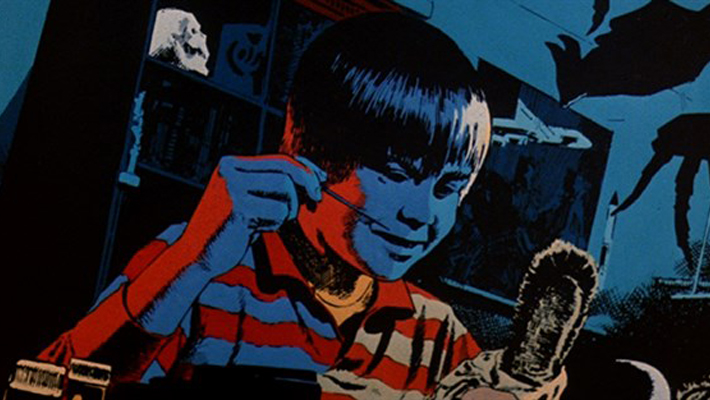
Creepshow (1982)
What do you get when you put director George A. Romero and writer Stephen King in a room that has Tom Savini swinging on a chandelier while he sprays everyone with fake blood? Movie magic. That’s what happened when the first Creepshow was created.
The continuity plot is short, but features Tom Atkins. For most horror hounds, I could stop right there for the universal nod, but let’s refresh. After working on cop dramas such as the TV version of Serpico and a few episodes of The Rockford Files, Tom Atkins began his takeover of epic horror movies lines, first with John Carpenter’s The Fog, then on through other classics such as Halloween III, Night of the Creeps, and Maniac Cop. This time, Atkins plays a belt-wielding dad trying to keep his son from reading “crap”, as in “Creepshow” comics. The stories come alive as the pages are shuffled by the wind after Atkins throws the book in the garbage. The finale is a short look at the kid’s revenge on his father.
While the continuity plot was short but fun, the stories were so good you forget that they’re all a part of one film. An undead father looking for cake, Leslie Nielsen torturing Ted Danson, corporate CEOs being overrun by cockroaches, and more tally up one of the best horror anthology movies created.
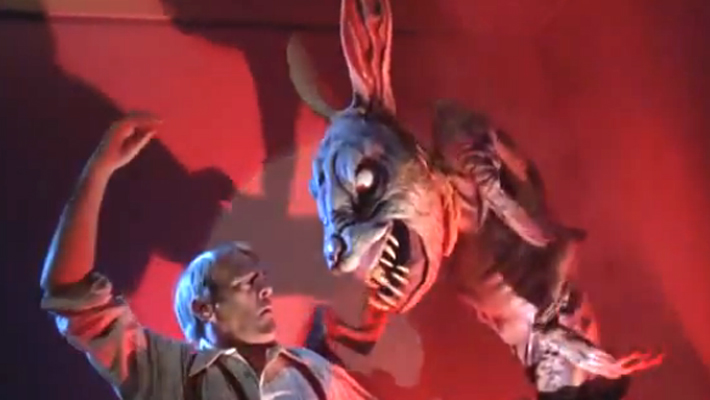
Twilight Zone: The Movie (1983)
I know, The Twilight Zone isn’t horror, it’s science fiction. Sure. Try saying that with a straight face after seeing Anthony’s sister, Sara.
No horror/sci-fi series has had the life that The Twilight Zone had except for maybe The Outer Limits. After five years of Rod Sterling introducing the odd events of The Twilight Zone, there came a movie years later, a decently received revival series in the 1980s on CBS, and finally a one season flop in the early 2000s. Was Twilight Zone: The Movie really that good to help a reinvention almost 20 years later? Yes.
As far as continuity plots go, Twilight Zone: The Movie didn’t have much of one. The prologue and epilogue center around some weird zombie-beast thing attacking people in cars, which is probably the worst part of the movie, but it makes the short stories that much better. Three story-lines from the original series were remade, with the addition of an original for the fourth. While only two out of the four stories have any real horror element (“Kick the Can” isn’t really scary, unless you have gerontophobia,) those stories are enough: a spoiled kid can wish for anything he wants, and John Lithgow finding out his craziest fears about flying have nothing on reality.

Cat’s Eye (1985)
After his success with Creepshow, Stephen King went off on his own, gathered some up-and-coming acting talent like Drew Barrymore and James Woods, and wrote another horror anthology screenplay with Cat’s Eye.
The continuity plot was interesting, especially if you’re a cat lover. It entails “the life of a cat,” with the events of the movie being events that one cat is a part of as the movie jumps from place to place. The “cat’s eye” element plays with the camera angles from the view of the cat at the beginning of each segment.
While the idea is great, the stories lacked a directorial theme. In one moment we’re in a David Cronenberg-like short film about experiments on the human condition, then on to the David Lynch spousal vengeance storyline, and end with a Jim Henson puppet.
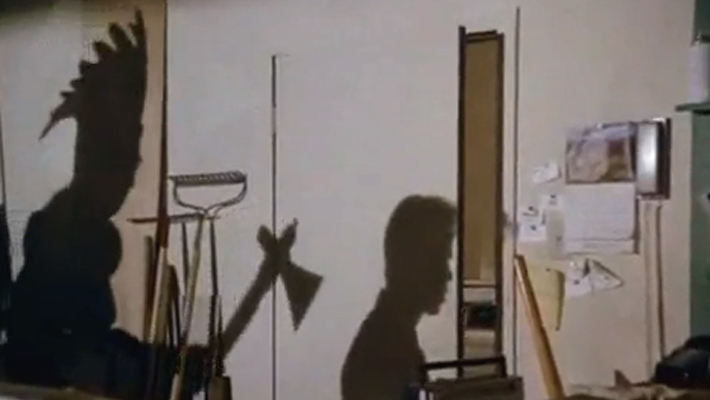
Creepshow 2 (1987)
Sequels usually can be merged with their originals when mapping out movie themes. They either get better or worse as they repeat the same formula, but Creepshow 2 deserves its own mention. George A. Romero didn’t direct it, but he helped write it. Stephen King didn’t write anything but the short stories that the movie’s segments were based on. Tom Savini played a bit part and wasn’t the FX artist (although he probably had a few pointers for Howard Berger.) All of that would usually spell “disaster,” with horror aficionados wailing and grinding their teeth and watching The Texas Chainsaw Massacre over and over again to get the horrible images out of their eyes. Luckily, that didn’t happen.
The continuity plot follows “The Creep” (played by Tom Savini,) who is disguised as a comic book delivery guy. A short, live-action segment transforms into animation, as the connection plot follows the exploits of Billy as he makes plans to get back at the neighborhood bullies. While that is going on, The Creep tells us of tales found in this latest issue of “Creepshow” that he had just delivered. It is set up very much like the “Tales from the Crypt” comics, with The Creep dressed up in ridiculous costumes when we see comic book page titles with The Creep’s introduction, but it works. It worked so well that HBO’s Tales from the Crypt series continued the tradition, just with a live-action puppet.
The short films themselves are arguably better than the original. Chief Woodenhead, a man-eating plastic bag in a lake, and that unforgettable line, “Thanks for the ride, lady!” from a dead hitch-hiker are the classics that come up when talking about horror anthologies.
We will not be discussing Creepshow 3, as that film has been left to rot in the catacombs of Hollywood.

Tales from the Darkside: The Movie (1990)
Tales from the Darkside: The Movie is one of those films that gets a bum rap because of its association with other films and television programs. First there was “The Twilight Zone,” then Twilight Zone: The Movie. Then Creepshow came out and had producers salivating to create a TV horror series again, giving birth to the “Tales from the Darkside” program that put out 4 seasons. “Monsters” was then run in its place, which was taken out to the woodshed when HBO launched “Tales from the Crypt.” As a final war cry, Tales from the Darkside: The Movie was put out in order to remind the world who did horror anthology television first…after “The Twilight Zone.”
The continuity plot revolves around your typical suburban housewife, who arrives home to prepare a feast for some dinner guests. The twist is, that feast’s main course is to be Timmy, the paperboy. In order to stall his fate, Timmy tells the woman some of his favorite stories from a book that she had left with him, “Tales from the Darkside.”
With an odd cast consisting of Steve Buscemi, Christian Slater, William Hickey, James Remar, and even Matthew Lawrence (yes, the brother of Joey Lawrence,) the tales revolve around mummies, evil cats, and the love of a good…goblin. This was one of those movies that found itself in a continual loop on cable stations in the 90s, so seeing this movie is almost a prerequisite for living.
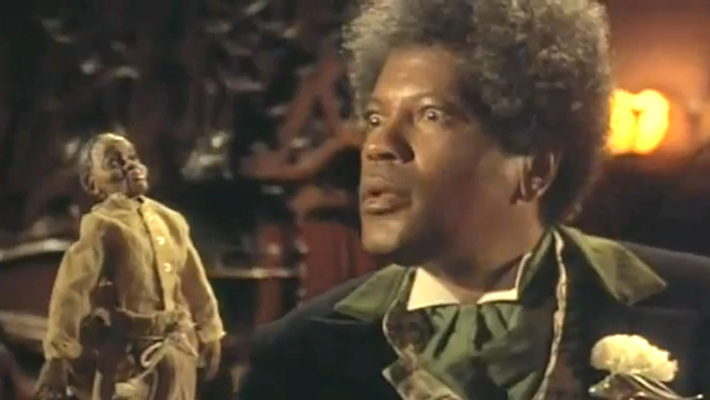
Tales from the Hood (1995)
Tales from the Hood: A Spike Lee Joint.
Well, not exactly, but Spike Lee got an executive producer mention for the most racially charged horror movie ever created when he was attached to Tales from the Hood, so that has to count for something.
The continuity plot involves a group of thugs who plan to rip off an undertaker named Mr. Simms (played insanely awesome by Clarence Williams III,) who has found a large amount of “the $#1+”, as they are so fond of saying, and the undertaker is so fond of mocking. While he leads them to “the $#1+,” Mr. Simms tells the men stories about the lives of the corpses they come across in coffins until they finally come to “the $#1+.”
While not all of the stories are racially charged, the best ones are. This film injects political satire into ghouls and ghosts as we watch the vengeance of a political activist murdered by the police, dolls inhabited by murdered slaves attacking a former KKK member, and the African-American version of A Clockwork Orange. If that isn’t enough, you can see David Alan Grier play the part of an abusive boyfriend.
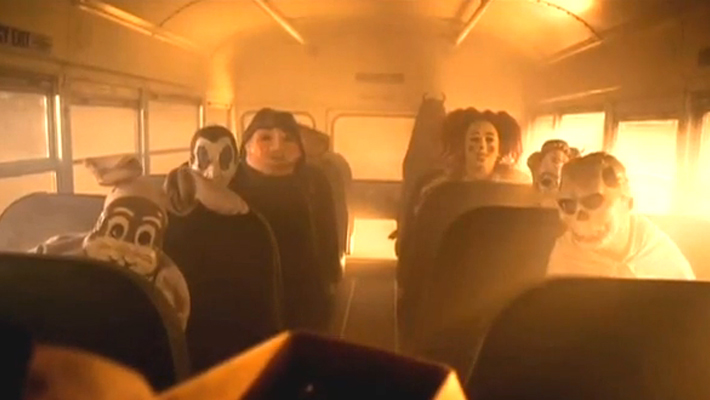
Trick ‘r Treat (2007)
Dubbed as a horror comedy by everyone except people who find little kids in generic Halloween costumes scary, Trick ‘r Treat is a holiday movie for the whole family. With stories about why you shouldn’t blow out a jack-o-lantern on Halloween, a principal who takes the holiday a bit too seriously, ghost children, and Anna Paquin in a suggestive Red Riding Hood costume, the movie strives to make us all afraid of the customs of Halloween.
The continuity plot focuses on one little trick-r-treater, Sam, as he finds himself within each storyline, finally with not-so-surprising consequences. Another element that is used is a connection between characters in a web so vast you may have to watch it twice. The second time, you’ll be holding a pen and paper as you draw arrows to and from story-lines and characters until you finally get it. It sounds complex, but as far as continuity plots for horror anthology movies, it’s one of the most interesting.
